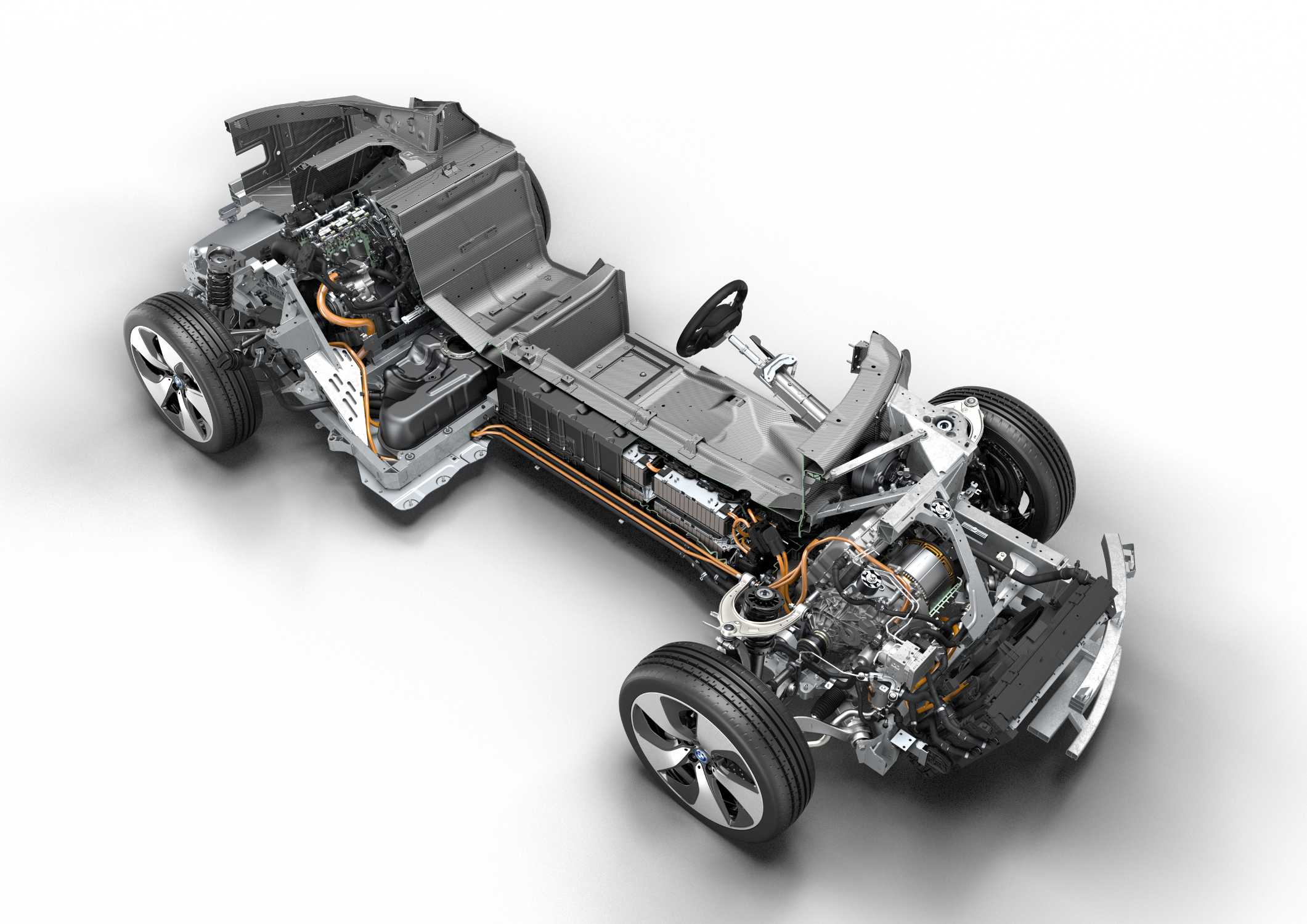BMW i8 Performance and power
The i8 uses both an internal combustion engine and an electric unit to get you moving.
BMW i8’s Innovative Hybrid Powertrain
Electric in the front
On the front axle you get an electric motor making 131 PS and 184 lb-ft (250 Nm) of torque whose sole job is to power the front wheels and, eventually, take you around town emissions free.
Turbocharged engine in the rear
On the rear axle you’ll find a 231 PS and 236 lb-ft (320 Nm) 1.5-liter 3-cylinder turbocharged engine that is responsible for the more fun part of the game. It is connected to a 6-speed automatic gearbox and only powers the rear wheels.

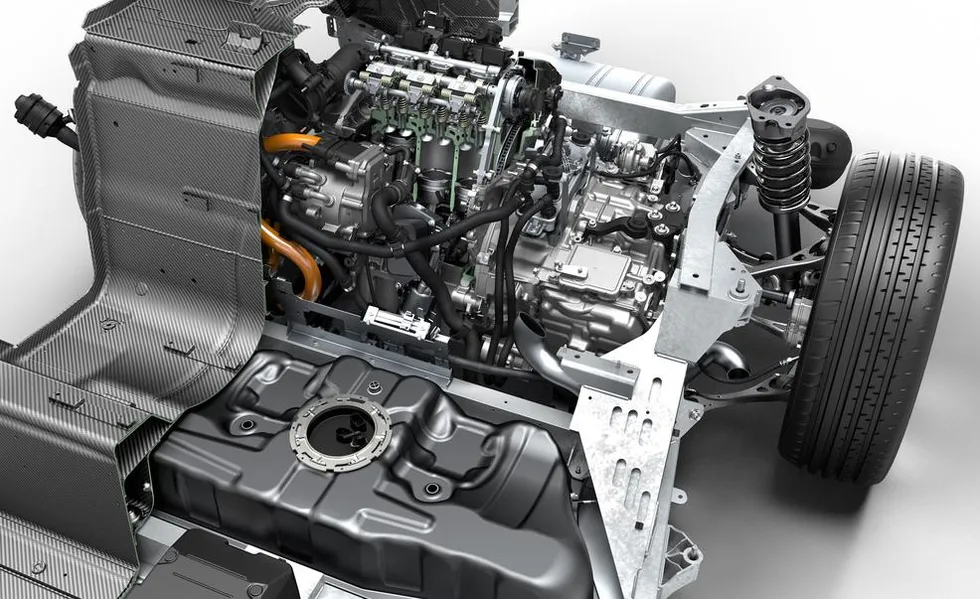
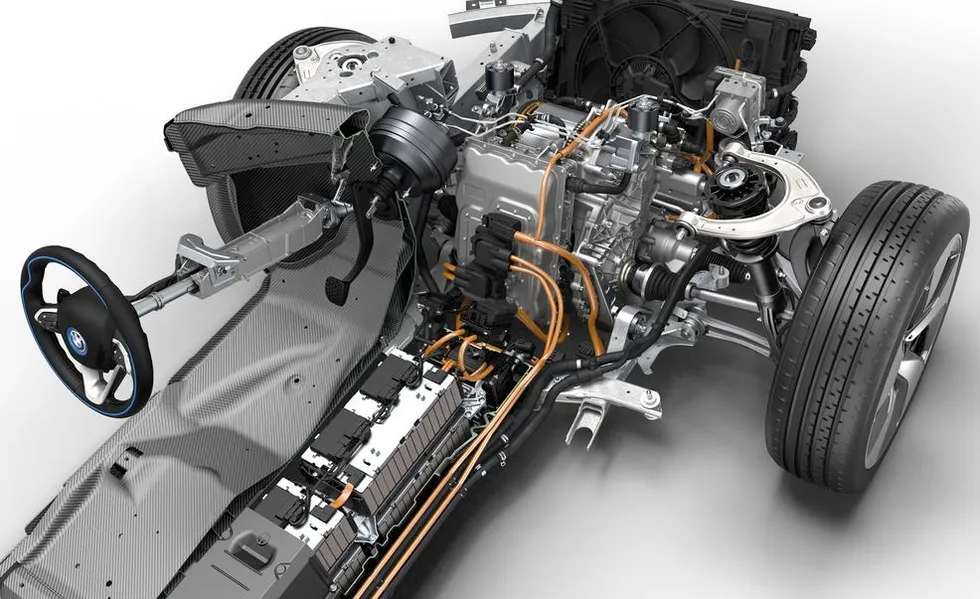
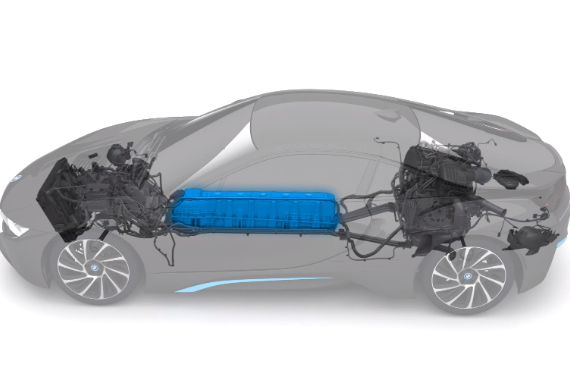
Engine
| Type (Electric) | AC Synchronous Electric Motor with integrated power electronics, charger and generator mode for recuperation |
| EDrive Motor Horsepower | 141 hp @ 4,300 rpm |
| EDrive Motor Torque | 184 hp @ 0-4,100 rpm |
| Type (Petrol) | 1.5L TwinPower Turbo 3-cylinder |
| Engine Horsepower | 228 hp @ 5,800-6,000 rpm |
| Engine Torque | 236 lb-ft @ 3,700 rpm |
| Combined HP/TQ | 357 hp (369 hp *) / 420 lb-ft |
| Battery Type | 7.1 kWh lithium-ion battery (11.6 kWh for 2018 – 2020 model years) |
Transmission
| Type (Electric) | AC Synchronous Electric Motor with integrated power electronics, charger and generator mode for recuperation | |
| Automatic Gear Ratios | 11.30, 5.85 | |
| Type (Petrol) |
|
|
| Automatic Gear Ratios | 4.46, 2.51, 1.56, 1.14, 0.85, 0.67 | |
| Final Drive Ratio | 3.68 | |
| Coefficient Drag | 0.27 (0.28 for Roadster) | |
| Drive Type | All-wheel drive |
Performance and Consumption
| 0-60 mph | 4.2 seconds (4.4 seconds for Roadster) |
|
| Top Speed | 155 mph (249 kph) | |
| EV Range |
|
|
| Total Range | 330 miles (531 km) | |
| MPGe Combined | 69 MPGe |
2016 BMW i8’s Innovative Hybrid Powertrain by AutoGuide
The video below explains how the BMW i8 is like nothing else on the road today. It’s innovative hybrid powertrain is what makes it so unique.
 Play Video
Play Video
Battery sits in the middle
Down the center of the i8 resides the lithium-ion battery (weighing 216-pounds) in an aluminum housing. The liquid-cooled pack can be fully recharged in 3.5 hours on 120 volts or 1.5 hours on a 220-volt charger. The battery also can be recharged by the electric motor during overrun, by regen braking, or via the gasoline engine’s starter-generator.
Even though the battery pack’s total energy capacity is 7.1 kWh, normal usage is limited to 5.2 kWh to ensure a satisfactory service life.
How far you can go
The maximum driving range of the BMW i8 on a full fuel tank and with a fully charged battery was more than 310 miles (500 km) in Comfort mode, which could be increased by up to 20% in Eco Pro mode.
Driving in the all-electric eDrive mode, you can expect a range of approx. 23 miles (37 kms).
Driving in the Sport mode setting firms up suspension, increases energy regeneration, and allows drivers to operate the six-speed auto manually.
Electric Power Steering (EPS)
The chassis and its suspension system are composed of a double-wishbone front axle and a five-link rear axle design. All axels are constructed from lightweight aluminum. The weight saving construction enables precision and comfort in steering at any speed.

Dynamic Damper Control
The multi-stage Dynamic Damper Control system integrated within the automatic transmission ensures the i8’s smooth running even at low RPM.
The electronically managed dampers deliver exceptional and optimal shock absorbing controls under any driving mode.
This system delivers the best operating dynamics, driving comfort, and energy efficiency.
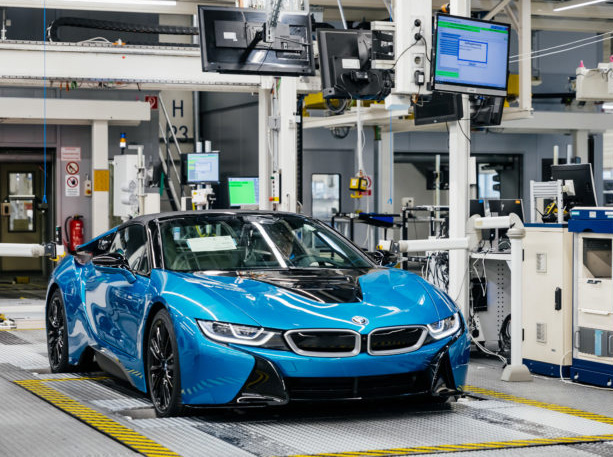
Dynamic Stability Control (DSC)
The Dynamic Stability Control is the stability system that continuously monitors the i8’s wheel rotation, steering angle, vehicle speed, lateral acceleration, brake pressure, and yaw rate.
If DSC detects oversteering, understeering or wheel spin, the system will automatically apply braking to individual wheels to restore stability.
The DSC system includes:
- Anti-lock Braking System (ABS)
- Cornering Brake Control (CBC)
- Dynamic Brake Control (DBC)
- Brake Assist
- Brake Standby
- Start-Off Assistant
- Fading Compensation
- Brake Drying function
Dynamic Traction Control (DTC)
The Dynamic Traction Control (DTC) is a sub-function of DSC and can be activated by a single switch. DTC in the BMW i8 raises the threshold of DSC.
It provides better dynamics during hard-corner turns and allows for a greater slippage when traveling on less desirable road conditions such as snow, rain or loose gravel.
* For the 2019 and newer models, the powertrain was revised to produce an additional 12-horsepower while also increasing overall range by about 3 miles.

